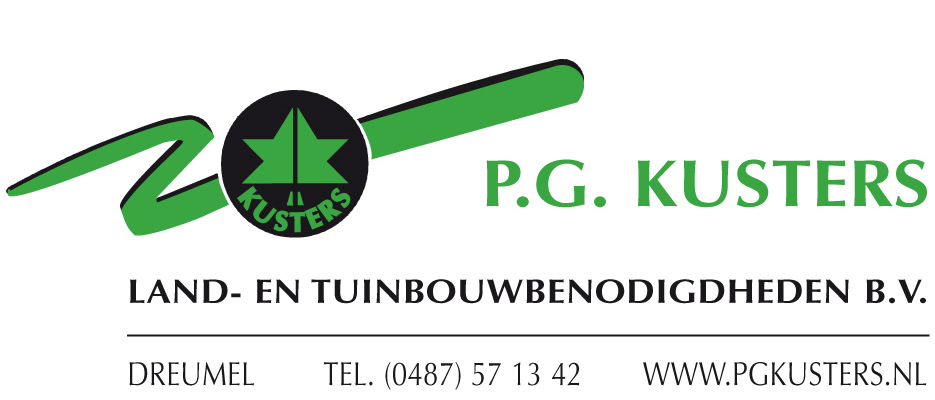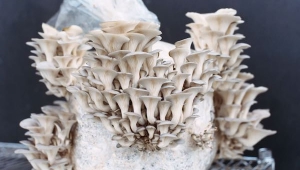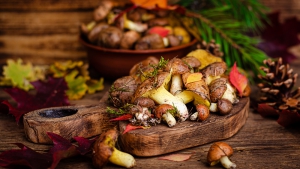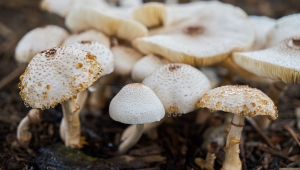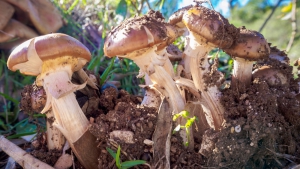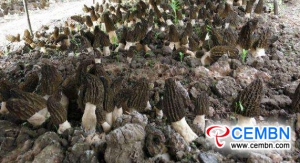On November 14th, Texans gained access to a new realm of the mushroom kingdom with the arrival of Smallhold’s specialty mushrooms on Central Market store shelves and the opening of their first Texas urban farm.
Breaking up a wall of brown button and portobello mushrooms with bursts of color and flavor, Smallhold’s locally grown, organic mushrooms introduce a world of previously unavailable flavors and textures to the produce aisle. For the first time, Texans will have the chance to pick up rich and nutty lion’s mane, deep cerulean oyster mushrooms and meaty royal trumpets – all grown down the road, rather than on the other side of the globe.
Please the article in full here
Source: Hortidaily | PR Team Smallhold.
Photo: Smallhold
So Much Fungi
It shouldn’t be a surprise that humble mushrooms, fungi that feed on decaying matter, are such a popular ingredient throughout many of the world’s cuisines. After all, mold and yeast, two basic fungi, are responsible for turning milk into blue cheese, wheat into bread and, of course, grape juice into wine. Mushrooms can have a similar transformative effect on food, lending a deep savory character to all sorts of dishes. This intangible quality is often called “meaty,” but mushrooms have several distinct flavor components that make them a natural partner for wine.
Earthy
Few foods are as earthy as mushrooms, which often taste like the soil in which they grow. If this quality appeals to you, pick a wine that will tease it out, rather than overwhelm it. Red Burgundy from the Côte de Nuits is a great earthy expression of Pinot Noir with mushroom-like undertones.
Peppery
Many mushrooms, especially when raw, have a subtle peppery, throat-tickling quality akin to that of radishes. Tannins can accentuate this sensation in an unpleasant way, so try a rich white wine to smooth it out. As it ages, Rioja Blanco develops nutty, caramelized aromas and an almost creamy texture that match beautifully with mushrooms.
Read the full article here.
Source: Wine Enthusiast, by Nils Bernstein
- Fungus can cure disease - 1929 Penicillin, an antibiotic was produced from a mold called ‘Penicillium Chrysogenum’ that is also a fungus.
- Fungi cell walls are made of chitin, not cellulose like plants.
- Mushrooms are more like people than plants. They have their own immune system that can produce vitamin D when exposed to sunlight.
- Mushrooms are almost entirely made of water and are excellent sources of B vitamins, selenium, and vitamin K.
- There are over 70,000 known species of fungus.
- The largest fungus on the planet is a honey mushroom in the Blue Mountains of Oregon stretching across 2384 acres and is estimated to be between 2400 and 8650 years old!
- At least 350 species are consumed as food.
- Mushrooms can be made into boards, fibers, even boats.
- A fungus has been discovered that breaks down plastic in weeks instead of years.
- Some mushrooms can breathe; Ganoderma Lucidum commonly known as the lingzi mushroom, respires oxygen in and carbon dioxide out.
Mushrooms, the Last Survivors
Neither plant nor animal, mushrooms have confounded humans since ancient times. Now, they’re a reminder of our tenuous place in an uncertain world.
The mushrooms sit on high, behind glass, above bottles of Armagnac and mezcal in a bar at the Standard hotel in Manhattan’s East Village. They are barely recognizable at first, just eerie silhouettes resembling coral growths in an aquarium, blooming in laboratory-teal light: tightly branched clusters of oyster mushrooms in hot pink, yolk yellow and bruise blue, alongside lion’s mane mushrooms, shaggy white globes with spines like trailing hair.
This isn’t décor, or only incidentally so; the 15-foot-long shelf is a miniature farm, installed by the New York-based start-up Smallhold as part of a larger, sprawling system made up of remote-controlled nodes at restaurants and grocery stores across the city, each producing from 30 to 100 pounds of mushrooms a week. Thousands of data points — on temperature, humidity, airflow — are transmitted daily to the company’s headquarters, to be recalibrated across the network as needed. At the Standard, where the crop goes into plates of chilaquiles and mushroom-infused bourbon cocktails, diners might stop midbite, look up and take note of their meal’s origins a few feet away. It’s a glimpse of the future of agriculture, further collapsing the distance between diner and ingredients, doing away with the cost and waste of packaging and transportation in hopes of alleviating pressure on an overtaxed environment.
Read the full article here.
Source: New York Times By
Morel mushrooms are packed with unique fragrance, complete functions and evident effect to food therapy. This kind of mushroom holds the efficacy of tonifying kidney and brain, refreshing while it shows good auxiliary therapeutic effects on dizziness insomnia, weakness of the spleen and the stomach, indigestion and poor appetite. Besides, Morel mushroom also helps prevent and fight with cancer, ward off colds, enhance the immune system and hence it medically shows crucial development value.
Now, in China, market price of dried Morel mushroom is at 1600-2000 CNY per kg. In western European countries, Morels are extremely in tight supply and high price.
Unlike other mushrooms, Morel mushrooms hold poor adaptability, and poor stability in the case of alien cultivation. Therefore, strains isolated by local Morel variety match local surrounding, eliminate the regional differences and influences resulted from long-distance purchasing or the course of mailing.
Wild Morels could be largely foraged during March to May after the rain while they occasionally pop in during August to September in small quantities.
Morel mushrooms hold long growth period, apart from low temperature, they also require large temperature difference that stimulates the differentiation of mycelia.
When water content of soil is lower than 40%, growth of Morel mushroom would be affected. As fruiting bodies substantially occur, relative air humidity in forest is at 80% and general water content of soil is at a range of 40%-50%. Besides, suitable PH Value that fits for growth of Morel mushroom is 7-8, weak scattered light also impels the growth of fruiting bodies.
However, strong direct sunlight does adverse impact to the growth of More;s. In early spring, growers could timely spray water in dry circumstance, and keep soil moist, or growth of fruiting bodies would be restricted. In a word, in early spring, temperature and humidity of growing environment are key elements that guarantee the success of Morels cultivation.
Mushrooms are good for you!
Mushrooms are good for you! Adding four to five medium sized mushrooms (100 g) to your diet provides important vitamins and minerals, essential for a healthy body and active lifestyle.
Mushrooms are a source of:
B Complex Vitamins – Mushrooms are a good source of B vitamins such as niacin, riboflavin, and panotothenic acid. These B vitamins help to provide energy by breaking down proteins, fats, and carbohydrates. B vitamins also play an important role in the nervous system.
Minerals – Mushrooms are a source of important minerals such as selenium, copper, and potassium. Minerals are necessary for the proper function of the human body and play different roles from making healthy red blood cells to protecting body cells.
Fibre – Mushrooms contain both soluble fibre and insoluble fibre, which helps to maintain good bowel health.
Vitamin D – Vitamin D works with Calcium and Phosphorus to make strong bones. Mushrooms are the only source of vitamin D in the produce aisle and one of the few non-fortified food sources.
Mushrooms are low in:
Fat
Carbohydrates
Sodium
Cholesterol
Sugar
Some easy ways to add more mushrooms and nutrients into your diet:
Add ½ cup white button mushrooms to your omelet or scrambled eggs. Benefit: one 1 extra gram of fibre.
Mix 1 cup of diced portabella mushrooms into pasta or pasta sauce. Benefit: three 3 extra grams of fibre.
Include 1 ½ cups sliced crimini (brown) mushrooms in risotto or other rice dishes. Benefit: five 5 extra grams of fibre.
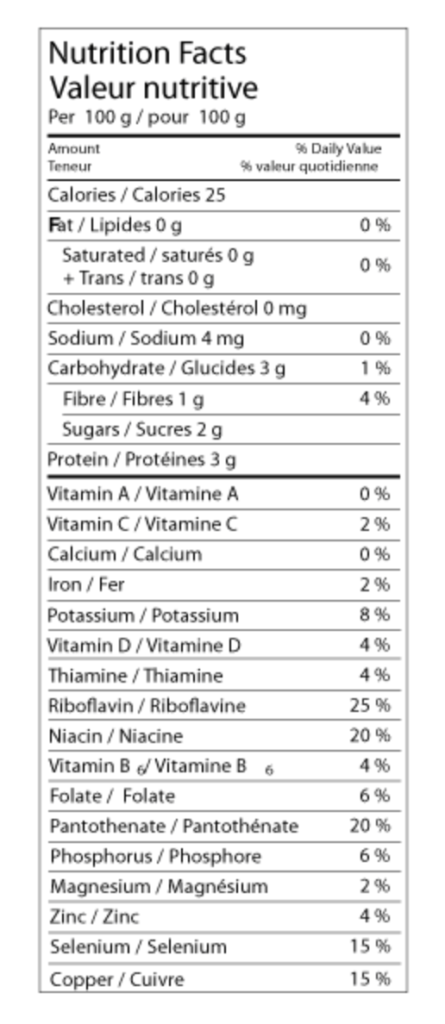
Source: Mushrooms Canada



